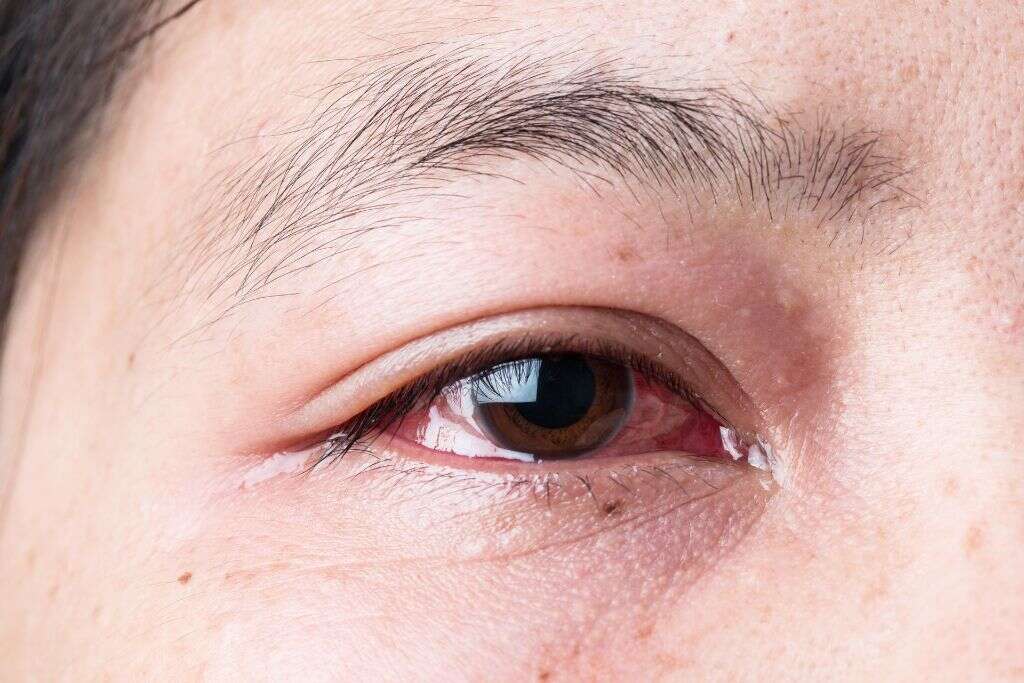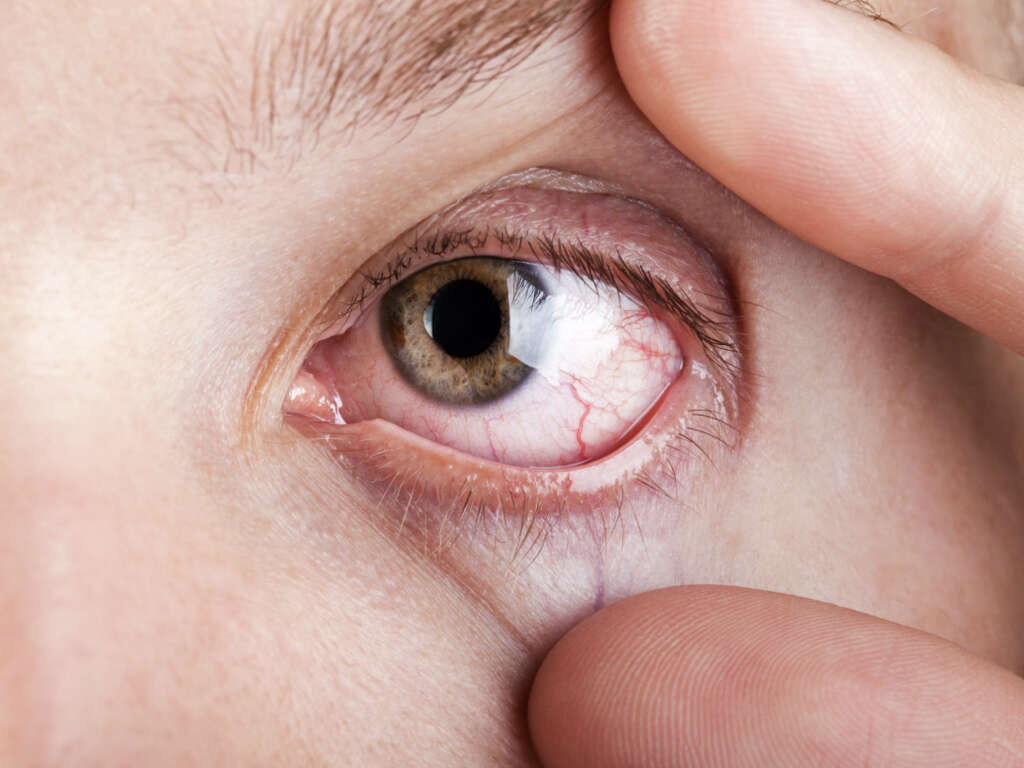What Is Iritis?
Life would be very different for us if we were to lose our vision. While our eyes are reasonably well protected, they are not completely safe so we should do what we can to help keep them in good condition. If we don’t then there are a number of conditions that might cause us problems.
Iritis is a condition that can be very uncomfortable, and it can also lead to some further complications if it is not addressed accordingly. The complications may even lead to a complete loss of sight, making it especially important to prevent the conditions and/or treat it as soon as it is diagnosed.

1. The Iris
The iris is located in the center of your eye. It is the ring that directly surrounds the pupil, which is the center-most part that allows light to enter into the eye. It is the part of the eye that gives us our eye color, and it adjusts to allow more or less light in the eye according to the light conditions.
Anterior uveitis is a condition where the iris becomes inflamed and swollen. Iritis is a particular type of anterior uveitis. The condition can cause some very unwelcome symptoms. It can also lead to permanent damage in some cases, so it should be treated as soon as it is detected.

2. Injury
Our eyes are set back quite deeply into our skulls, and this helps to give them a good level of protection. This does not make them completely safe from injury, however. With only a thin layer of skin protecting them at the front, our eyes can sometimes be damaged by objects that come from the front.
Our eyes are also not completely safe from damage from other angles. A severe enough blow to the skull can break the skull and damage the soft tissues inside. Our eyes can also become injured by chemicals and burns, and safety goggles should always be used when you expect to be around potentially harmful fumes, smoke, and gases.

3. Infectious Diseases
Infectious diseases can cause considerable damage to certain parts of the body if they are not treated accordingly. In some cases, a disease can affect parts of the body that were not the original location of the infection. One example of something that can cause iritis is tuberculosis, which is a bacterial lung infection.
Another is syphilis, which is a type of sexually transmitted disease. A fungal lung infection known as histoplasmosis is another example, as is toxoplasmosis, which is a type of parasitic infection. Infections like these can often be treated but can be dangerous if they are not so medical assistance should be sought as soon as they are discovered.

4. Viral infections
The herpes virus is fairly common, and most of us are likely to encounter it at some point in our lives. It is often associated with sexually transmitted diseases and there is a variety that is transmitted by sex. There is another type that can infect your face.
Cold sores are a fairly common infliction that most of us will experience, and they tend to occur when the weather changes or when we are feeling run down. At these times, our immune system is likely to be weaker than it usually is. This means that the herpes viruses, which is also responsible for cold sores, is more likely to be able to take hold. Severe infections of the herpes virus can result in iritis.

5. Medications
It is highly recommended to always follow the advice of professionals when taking medication. This is because, among other things, some types of medication can cause some very unwelcome side effects. They can even be dangerous in some cases so their use needs to be considered very carefully indeed.
Some drugs known as bisphosphonates, which can help to treat osteoporosis, can cause iritis in a rare number of cases. Some medications that are used to help treat HIV might also lead to iritis. While these medications are able to cause the condition, it will occur in a very rare number of cases.

6. Genetics
Our genetic information determines pretty much everything about us. It helps determine our physical attributes, many of our mental attributes, and it can even determine how well we are able to protect ourselves against disease. Some people have immune systems that are stronger than others, while some people are prone to catching certain diseases.
Rheumatoid arthritis is an autoimmune condition that affects the joints mainly, but it can also affect other parts of the body. This includes the iris. Another is Sarcoidosis, which is another type of autoimmune disease that causes inflammatory cells to accumulate in parts of the body.

7. Symptoms
Iritis is a condition that tends to arise suddenly, although it can develop more gradually in some cases. The symptoms are also likely to last for up to 3 months and the severity of the symptoms can also vary. The symptoms can continue to worsen so treatment is recommended as soon as possible.
One of the symptoms of iritis is that it can cause our eyes to become red, and the patient can also develop an increased sensitivity to light. Patients can also experience an aching sensation in their eyes, while they can also begin to experience a loss of vision.

8. Risk Factors
Nobody is completely safe from developing iritis. It can happen even in the healthiest of people, but some people are more prone to developing it than others are. This can mean people with certain medical conditions, while it can also mean people that take part in certain activities.
As mentioned, some people with certain genetic conditions and/or certain autoimmune conditions are at a higher risk of developing iritis, as are those with certain infectious diseases. A weakened immune system can also increase a person’s risk, and studies have shown that people who smoke regularly are also more likely to develop iritis.

9. Complications
In addition to the symptoms already mentioned, iritis can also lead to further complications in some cases. This makes it especially important to get the condition seen to as soon as a problem is detected. One such problem is cataracts, which is a relatively common condition that is fairly easy to treat.
Another possible complication includes glaucoma. This is high pressure in the eye and it can lead to permanent loss of vision. An irregular pupil is also a possibility, and this can slow down the patient’s natural reflexes to light. Calcium deposits can also be a problem, as can swelling within the retina.

10. Treatment
The main aim of treating iritis is to help ensure the patient does not lose their vision. This can mean treating the symptoms caused and the underlying cause of the condition. It is also important to try and help relieve the patient of any pain that they might be experiencing.
Some eyedrops may be used to help the pupil dilate, and this can help reduce pain as well as prevent certain complications. Steroid eyedrops to help reduce inflammation are also sometimes used. Oral medications may also be used in some cases if other methods are not proving to be effective. Surgery for conditions like cataracts may also be deemed necessary in some cases.












